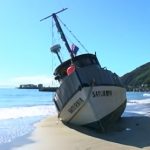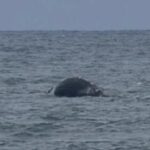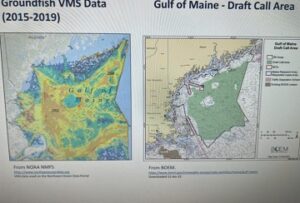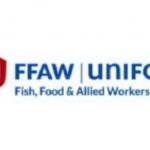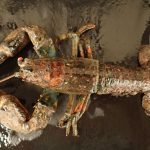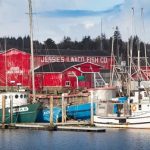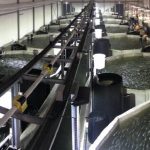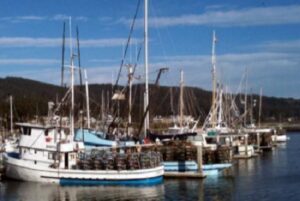Tag Archives: Maryland Department of Natural Resources
Maryland Catfish Trail hopes to control invasive species
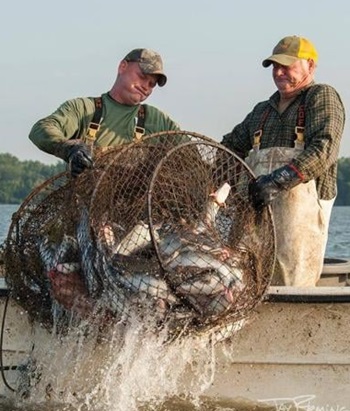 It’s early afternoon on a comfortable Sunday when Keith Bradfield and his brother Ray pull up to the Smallwood State Park dock after a long day of fishing. And they’ve been successful. Very successful. The Fairfax, Va., resident pulls up the lid of the cooler to reveal it stuffed with invasive blue catfish up to about 30 pounds each. Bradfield, who shows an image of his sonar lit up like a Christmas tree signifying the invasive species, said he looks for the fish in the deepest holes of the river, “but they’re pretty much everywhere.” And the blue catfish’s population has become such a problem that the state recently initiated a Maryland Catfish Trail where anglers can target fellow invasive flathead catfish and snakeheads in an attempt to help lower their numbers. Photos, more, >>CLICK TO READ<< 06:39
It’s early afternoon on a comfortable Sunday when Keith Bradfield and his brother Ray pull up to the Smallwood State Park dock after a long day of fishing. And they’ve been successful. Very successful. The Fairfax, Va., resident pulls up the lid of the cooler to reveal it stuffed with invasive blue catfish up to about 30 pounds each. Bradfield, who shows an image of his sonar lit up like a Christmas tree signifying the invasive species, said he looks for the fish in the deepest holes of the river, “but they’re pretty much everywhere.” And the blue catfish’s population has become such a problem that the state recently initiated a Maryland Catfish Trail where anglers can target fellow invasive flathead catfish and snakeheads in an attempt to help lower their numbers. Photos, more, >>CLICK TO READ<< 06:39
US Wind to offer compensation package to local fishermen
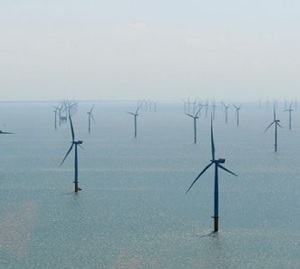 This week, US Wind’s senior director of external affairs, Nancy Sopko, confirmed that the company is developing a mitigation program for commercial and for-hire recreational fishermen. The announcement comes a week after the Worcester County Commissioners shared concerns about a potential agreement. “US Wind is adopting a compensation program to benefit commercial and for-hire recreational fishermen, a measure BOEM (Bureau of Ocean Energy Management) recognized as effective in our FEIS (Federal Environmental Impact Statement),” Sopko said. “US Wind and the Maryland Department of Natural Resources signed a Letter of Intent in July 2024 to develop a fisheries compensatory mitigation program by early 2025. Such a mitigation program could include financial assistance, assistance with equipment upgrades or training, and other services. We look forward to working with the state on outreach to the fishing community to further develop details of this mitigation program.” more, >>CLICK TO READ<< 18:09
This week, US Wind’s senior director of external affairs, Nancy Sopko, confirmed that the company is developing a mitigation program for commercial and for-hire recreational fishermen. The announcement comes a week after the Worcester County Commissioners shared concerns about a potential agreement. “US Wind is adopting a compensation program to benefit commercial and for-hire recreational fishermen, a measure BOEM (Bureau of Ocean Energy Management) recognized as effective in our FEIS (Federal Environmental Impact Statement),” Sopko said. “US Wind and the Maryland Department of Natural Resources signed a Letter of Intent in July 2024 to develop a fisheries compensatory mitigation program by early 2025. Such a mitigation program could include financial assistance, assistance with equipment upgrades or training, and other services. We look forward to working with the state on outreach to the fishing community to further develop details of this mitigation program.” more, >>CLICK TO READ<< 18:09
Gone Shrimpin’: MD, VA Shrimp Harvests Return For 2024 Season
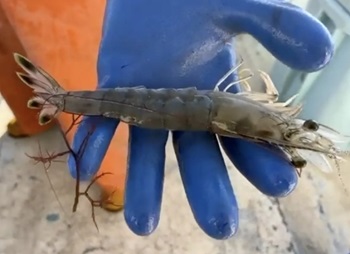 In the movie Forrest Gump, Alabama native Bubba proclaims, “Shrimp is the fruit of the sea.” Indeed, the south has long been known for its shrimp harvests, but the Chesapeake Bay? Not so much. In recent years, that’s been changing. Shrimp appear to be more abundant further north along the Atlantic coast. Virginia experimented with commercial shrimping for four years, saw success, and has had a commercial shrimp fishery for the last two years. Maryland forged ahead with its own pilot program in 2023, beginning with just one waterman. The 2024 pilot program is open to applicants now. A permit allows a commercial fisherman to use a 16-foot beam trawl to fish Maryland state waters of the Atlantic Ocean (extending out to three nautical miles). You can see the single permit holder, Sonny Gwin, in action on his first day fishing in 2023. Video, more, >>CLICK TO READ<< 07:02
In the movie Forrest Gump, Alabama native Bubba proclaims, “Shrimp is the fruit of the sea.” Indeed, the south has long been known for its shrimp harvests, but the Chesapeake Bay? Not so much. In recent years, that’s been changing. Shrimp appear to be more abundant further north along the Atlantic coast. Virginia experimented with commercial shrimping for four years, saw success, and has had a commercial shrimp fishery for the last two years. Maryland forged ahead with its own pilot program in 2023, beginning with just one waterman. The 2024 pilot program is open to applicants now. A permit allows a commercial fisherman to use a 16-foot beam trawl to fish Maryland state waters of the Atlantic Ocean (extending out to three nautical miles). You can see the single permit holder, Sonny Gwin, in action on his first day fishing in 2023. Video, more, >>CLICK TO READ<< 07:02
Lesion-Causing Disease in Chesapeake Bay Bait Fish Alarms Watermen
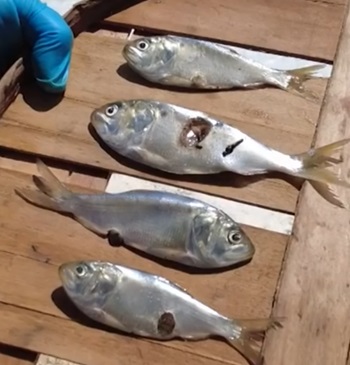 The disease, characterized by ulcers and lesions, is affecting menhaden, acrucial bait fish. Commercial crabber CJ Canby reports seeing dead menhaden floating in the bay on a weekly basis. “Last year, we had a 5-gallon bucket of menhaden, and 3 or 4 out of them had lesions. The other day, we cast-netted 23 fish, and 4 of them had lesions. So, the rate of lesions in menhaden has astronomically increased,” said Captain CJ Canby of the FV Miss Paula. Canby emphasizes the seriousness of the issue for watermen. “The fish are telling us there’s a problem, and it’s showing. more, >>CLICK TO READ<< 09:46
The disease, characterized by ulcers and lesions, is affecting menhaden, acrucial bait fish. Commercial crabber CJ Canby reports seeing dead menhaden floating in the bay on a weekly basis. “Last year, we had a 5-gallon bucket of menhaden, and 3 or 4 out of them had lesions. The other day, we cast-netted 23 fish, and 4 of them had lesions. So, the rate of lesions in menhaden has astronomically increased,” said Captain CJ Canby of the FV Miss Paula. Canby emphasizes the seriousness of the issue for watermen. “The fish are telling us there’s a problem, and it’s showing. more, >>CLICK TO READ<< 09:46
Virginia Moves To End 16-Year Ban On Dredging For Crabs During Winter
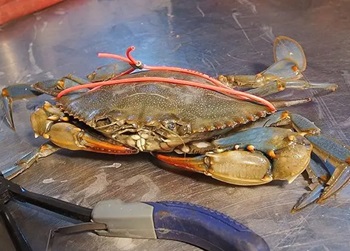 Virginia’s fishery managers have lifted the longstanding ban on dredging for blue crabs during the winter in the Chesapeake Bay, a seismic policy shift that drew strong criticism from their Maryland counterparts and conservationists. The Virginia Marine Resources Commission voted 5–4 on June 25 to repeal the 16-year prohibition on winter dredging. The board is expected to reconvene in September to consider staff recommendations on how to implement the fishery. The new season could open as early as this December. The board’s action came after the VMRC’s Crab Management Advisory Committee, which is mostly made up of industry members, voted 10–2 in favor of reopening the winter season. After that May 29 vote, the agency received 186 public comments on the proposal — all in opposition. more, >>CLICK TO READ<< 16:12
Virginia’s fishery managers have lifted the longstanding ban on dredging for blue crabs during the winter in the Chesapeake Bay, a seismic policy shift that drew strong criticism from their Maryland counterparts and conservationists. The Virginia Marine Resources Commission voted 5–4 on June 25 to repeal the 16-year prohibition on winter dredging. The board is expected to reconvene in September to consider staff recommendations on how to implement the fishery. The new season could open as early as this December. The board’s action came after the VMRC’s Crab Management Advisory Committee, which is mostly made up of industry members, voted 10–2 in favor of reopening the winter season. After that May 29 vote, the agency received 186 public comments on the proposal — all in opposition. more, >>CLICK TO READ<< 16:12
Skipjacks, oysters: The fight for survival of two Chesapeake Bay icons
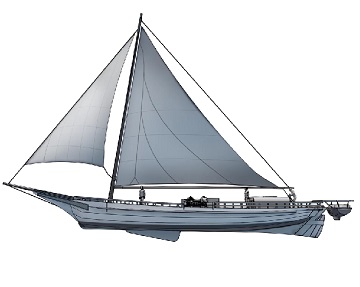 Starting Sunday, oyster enthusiasts will once again be free to pick up their rakes and tongs and harvest Maryland’s signature shellfish delicacy from the floor of the Chesapeake Bay and its tributaries.A month after the season begins, commercial oyster fisherman will take to the water to get their own haul. But one boat will stand out among from the rest: the skipjack, a nimble oyster-dredging sailboat that represents the state’s long maritime tradition. “The oysters are looking better. I’m optimistic,” said Shawn Ridgley, a veteran oysterman and skipjack captain who currently gathers data for the Maryland Department of Natural Resources. A typical skipjack carries a crew of five and can legally harvest 100 bushels of oysters a day. Lately, “boats are catching their limit by 10:00, 10:30 in the morning,” Ridgley said. >>click to read<< 14:05
Starting Sunday, oyster enthusiasts will once again be free to pick up their rakes and tongs and harvest Maryland’s signature shellfish delicacy from the floor of the Chesapeake Bay and its tributaries.A month after the season begins, commercial oyster fisherman will take to the water to get their own haul. But one boat will stand out among from the rest: the skipjack, a nimble oyster-dredging sailboat that represents the state’s long maritime tradition. “The oysters are looking better. I’m optimistic,” said Shawn Ridgley, a veteran oysterman and skipjack captain who currently gathers data for the Maryland Department of Natural Resources. A typical skipjack carries a crew of five and can legally harvest 100 bushels of oysters a day. Lately, “boats are catching their limit by 10:00, 10:30 in the morning,” Ridgley said. >>click to read<< 14:05
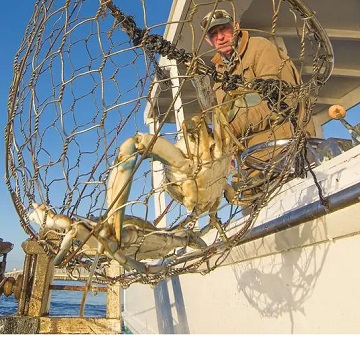
Reins Loosened Slightly On Chesapeake Bay Crab Harvest
“We’re being cautious, but I think we’re being responsible,” said Ed Tankard, a board member with the Virginia Marine Resources Commission, which voted June 27 to ease certain bushel limits. In Maryland, the state Department of Natural Resources announced on the same day a raft of industry-friendly changes to its crab controls, including modestly increasing the allowable harvest of female crabs and lifting limits on the harvest of males over Labor Day weekend. Those moves came a few weeks after the panel that regulates the Potomac River’s fishing industry agreed to roll back bushel limits on female crabs to 2021 levels. >click to read< 12:21
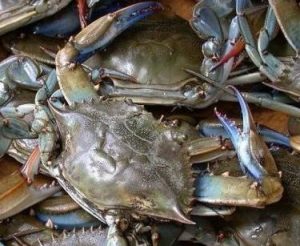
Chesapeake Bay blue crab population improves after all-time low in 2022
This year, the number of spawning age female crabs and adult male crabs both increased substantially, but the number of juvenile crabs only increased by about 15%, according to the winter dredge survey, which is completed from December to March by the Maryland Department of Natural Resources and the Virginia Institute of Marine Science. “We are encouraged by the increases in adult crab abundance, but we need to be vigilant given the ongoing low recruitment numbers,” said Lynn Fegley, acting director for Maryland Department of Natural Resources’s Fishing and Boating Services, in a statement. “We haven’t seen a strong year class since 2019 despite maintaining the spawning stock at a level capable of producing one.” Video, >click to read< 12:56
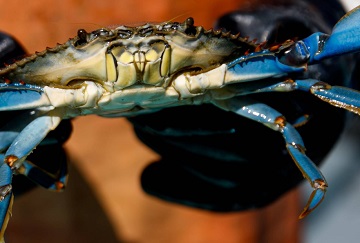
Maryland, Virginia race to save dwindling commercial fisheries in the Chesapeake Bay
Alarmed by plummeting stocks of commercial fisheries in the Chesapeake Bay, officials in Maryland and Virginia are scrambling to control invasive fish species that are causing at least part of the problem. On Thursday, Gov. Wes Moore asked the federal government to carry out an evaluation to determine if the situation amounts to a declaration of a “commercial fishery disaster,” which would qualify the state for federal assistance. In a letter to Secretary of Commerce Gina Raimondo, Moore said the state is increasingly concerned about the explosive growth of invasive fish species in the Chesapeake Bay, including blue catfish, flathead catfish and snakehead. >click to read< 09:11

Maryland to restrict crabbing, including first-ever limits on harvest of male blue crab
Regulations issued this week, to be in effect from July through December, will limit commercial watermen to at most 15 bushels a day of male crabs in August and September. And the regulations will tighten existing restrictions on how many female crabs watermen can catch. The changes come weeks after an annual survey of Chesapeake blue crabs,,, That state fishery managers moved to limit even the harvest of male crabs demonstrates the gravity of the situation. Limits are typically only imposed on female crabs as a means of ensuring enough of them to survive to spawn, but with a more than 60% decline in the overall estimated blue crab population since 2019, scientists and representatives from the seafood industry are signaling that more protections are needed to help boost crab reproduction. >click to read< 16:02
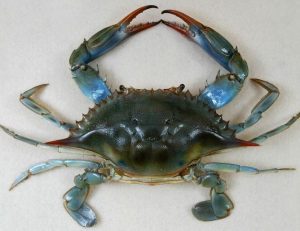
Chesapeake Bay blue crabs in trouble, tighter harvest restrictions loom
With the Chesapeake Bay’s crab population at its lowest ebb in more than 30 years, Maryland and Virginia are moving to curtail harvests in one of the region’s most valuable fisheries. Fisheries regulators in both states have proposed new catch restrictions, with plans to finalize them by the end of June. In Maryland, tighter limits for both commercial and recreational crabbing would take effect in July and for the first time would limit commercial harvests of male crabs, not just females. New commercial restrictions in Virginia would begin in October and continue until the crabbing season ends Nov. 30. >click to read< 08:17
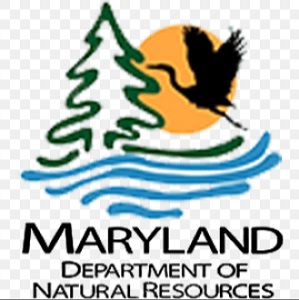
CARES Act Applications Now Available for Maryland Fishing Industry – Deadline to Apply is Feb. 28, 2021
The Maryland Department of Natural Resources announces that applications remain available through February 28, 2021 for economic relief funds for the commercial seafood industry through the federal Coronavirus Aid, Relief, and Economic Security Act (CARES), for those who have been affected by the COVID-19 pandemic. The application will be available to eligible members of the seafood industry on the Maryland OneStop website. The deadline to apply is Feb. 28, 2021. >click to read< 09:27
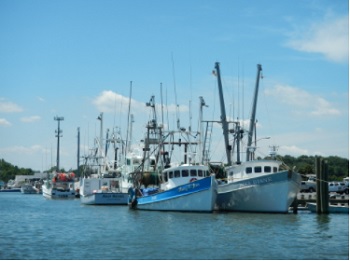
CARES Act Funding Available for Maryland Fishing Industry
The Maryland Department of Natural Resources announces applications will be available Nov. 4 for economic relief funds for the commercial seafood industry through the federal Coronavirus Aid, Relief, and Economic Security Act (CARES), for those who have been affected by the COVID-19 pandemic. The application will be available to eligible members of the seafood industry on the Maryland OneStop website. The deadline to apply is Feb. 28, 2021. >click to read< 16:20
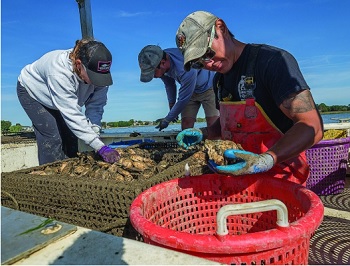
Maryland’s wild oyster harvest doubles from last year
Despite having fewer days to work, Maryland watermen harvested nearly twice as many wild oysters last season as they did the previous year, state officials report. Even so, a new study finds the state’s population of bivalves is in much better shape now than it was two years ago, with abundance up and overfishing down. As a result, state fisheries managers say they’re weighing whether to maintain catch restrictions put in place last season or relax them for the next wild harvest season, which normally begins Oct. 1. Data presented Monday night to the Department of Natural Resources’ Oyster Advisory Commission indicates that the overall abundance of adult, market-size oysters in Maryland’s portion of the Chesapeake Bay has rebounded considerably since 2018 and is now at the fifth highest level since 1999. >click to read< 17:01
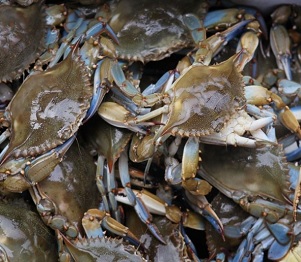
Female Blue Crab Population Up In Chesapeake Bay, Juvenile Numbers Low
Chesapeake Bay blue crab population appears to have a healthy number of spawning-age female crabs, according to the 2020 Blue Crab Winter Dredge Survey. Maryland, Virginia and the Potomac River Fisheries Commission aims to conserve more than 70 million adult female crabs annually to ensure enough young crabs can be produced to sustain the population, a task that has now been achieved for the sixth consecutive year. This year’s survey estimates 141 million adult female crabs were conserved, which is above the long-term average of 126 million. The total amount of blue crab in the Chesapeake Bay in 2020 was 405 million crabs,,, >click to read< 14:56
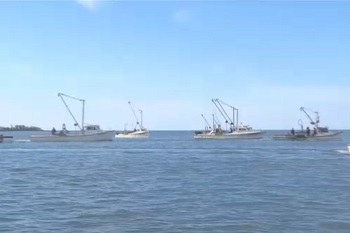
Watermen protest on Manokin River and call for Oyster Sanctuary to be re-opened
Watermen gathered on the Manokin River Wednesday, calling for the oyster sanctuary to be opened up for harvesting. In 2019, the Manokin River was chosen as the 10th Chesapeake Bay tributary for large-scale oyster reef restoration. According to the Maryland Department of Natural Resources, the Chesapeake Bay Watershed Agreement calls for the restoration of the native oyster population in 10 tributaries by 2025. The Manokin River is the final tributary to be selected for this Chesapeake Bay Program partnership effort. Video, >click to read< 09:00
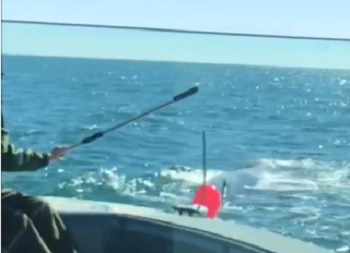
Maryland DNR rescues trapped whale off shore of Ocean City
A trapped whale was rescued recently in the waters off Ocean City, thanks to officers from the Maryland Department of Natural Resources. Sgt. Andrew Wilson said he and his crew were on patrol near Ocean City on Oct. 24 when suddenly, a transmission came through: a whale spotted offshore was stuck and unable to get free. Upon discovering the animal, officers noticed its tail was entangled by two buoys and a fishing gear line, according to Wilson. >Video, click to read< 13:09

Maryland crabbers rescue bald eagle
As they were crabbing in the early morning Wednesday, July 18, twin brothers Christopher and Russell Payne of Easton saw something unusual flopping around in the Tred Avon River off Oxford. The closer they edged their 27-foot workboat Twice the Payne, however, they realized a male bald eagle was struggling to swim. “He looked worn out,” Chris Payne said. “He was trying to swim towards shore about 100 to 200 yards in front of the Sunset Grill.” Russell retrieved the eagle with his crab net and eased him onto the stern of their boat. The brothers kept their distance while they called the Maryland Department of Natural Resources.“He was still skittish, and we didn’t want to get close to it. He was breathing like he had run a marathon,”>click to read<16:03

Blue crab population in Chesapeake Bay down for second year
The blue crab population in the Chesapeake Bay declined by nearly one-fifth for the second year in a row, with the male population hitting a trigger point that has lead to discussions over management, according to a new report. Experts say the overall stock remains healthy and decline is not cause for immediate concern, but that they are closely watching the numbers. The harsh winter coupled with a scarcity of young crabs last year has contributed to the low numbers in the beginning of the crab season,,, >click to read<13:04
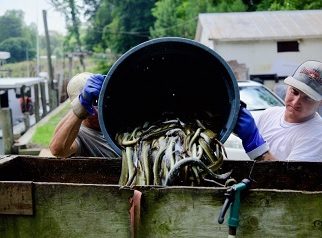
Slithering from the bay to dinner tables far overseas
When onlookers see Jimmy Trossbach pull up pounds and pounds of eels from his pots from the water, they are amazed. “They get a little closer to stare at them,” Trossbach said. “Then they get scared and they back up” from the slimy, snake-like aquatic creatures. The most frequent comment he hears is that they didn’t know eels existed in the Chesapeake Bay, just like oysters, crabs, rockfish and other marine species with which Marylanders are familiar. A waterman who lives less than a mile away from where he was born in Drayden, Trossbach has spent many of his waking hours hunting for eels up and down the bay and its tributaries for the past 31 years. >click to read<16:33

Chesapeake Bay’s blue crabs made it through tough weather, survey finds
Despite the seemingly unending winter weather, Maryland found that the population of blue crabs in the Chesapeake Bay are “healthy and sustainable.” According to this year’s Blue Crab Winter Dredge Survey from the Maryland Department of Natural Resources, even though around 35 percent of adult female blue crabs didn’t make it through the cold, icy weather, there was a marked increase of young crabs returning to the bay this year. “The population is showing more resiliency to those ups and downs and those stresses,” said Chris Moore, senior regional ecosystem scientist with the Chesapeake Bay Foundation. >click to read<23:36

Inviasve fish, Part 2 — the managing
Addressing invasive species issues requires dealing with two groups resistant to management — fish and people, so sound, scientific principles must be applied but psychology and human relations principles may be even more important. This column attempts to summarize hundreds of pages of articles and studies on blue catfish, flathead catfish and northern snakeheads. To repeat from Part 1, they are considered invasive to the greater Chesapeake Bay and its tributaries since they are “non-native species that cause harm to the economy, to the environment or human health” or “reproduce and expand beyond their initial areas of introduction.” click here to read the story 15:41
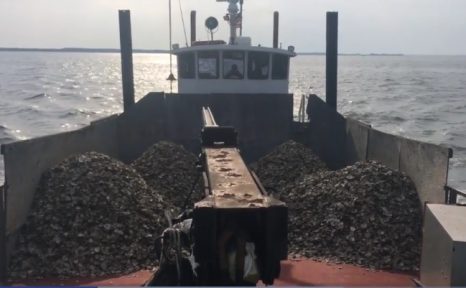
Maryland slashes oyster restoration acreage goal in Eastern Shore sanctuary
Maryland has decided to reduce the large-scale oyster restoration project goal in the Little Choptank River after boaters ran aground at another sanctuary and some of the man-made reefs there had to be rebuilt. The sanctuaries are among five planned to be built as part of a federal-state agreement to improve water quality in the Chesapeake Bay watershed.,, Skeptical of oyster restoration from the start, watermen have complained of trotlines getting stuck in new stone river bottoms and boats being damaged by oyster reef “high spots” in Harris Creek. A trotline is a long, heavy fishing line with short, baited lines suspended from it. They are often used to catch blue crabs in Maryland. click here to read the story 09:46
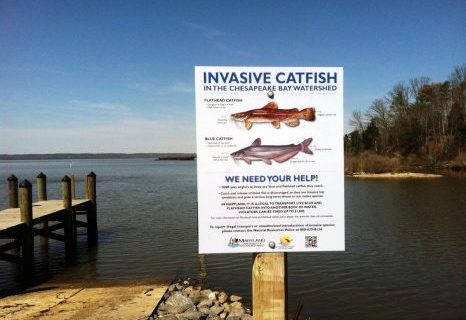
Maryland fishermen fight federal catfish regulations
Maryland Gov. Larry Hogan’s administration has joined the cause and also sent a letter to UDSA Secretary Perdue, asking for “immediate regulatory relief” from the mandated inspection program for the wild-caught, U.S. catfish industry. “With the U.S. seafood trade deficit reaching historic proportions, strict harvest limits on most other wild seafood species, and traditional U.S. seafood jobs on the decline, the (Trump) Administration must provide every possible advantage to Americans seeking to invest in the business of wild-caught, domestic catfish,” Hogan wrote in the letter dated Tuesday, Aug. 8. Hogan wrote that American consumers increasingly are demanding wild, domestic seafood, and catfish is among that. The “seafood market for catfish in the Maryland/Virginia/D.C. region has grown from zero to millions of pounds sold in just a few years,” the letter reads. click here to read the story 08:30
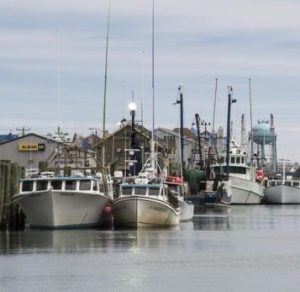
Ocean City Inlet shoaling problem continues
Problems with sand plugging up the Ocean City Inlet have persisted for decades. “There’s billions of dollars (of state revenue) here,” said fisherman Mike Coppa, owner and operator of a West Ocean City trawling operation. “This is a huge problem. It’s the biggest problem we have.” Local commercial fishermen were the guests at an open forum hosted by the Maryland Department of Natural Resources at the Ocean City Marlin Club on Monday, March 27. The semi-annual gathering is held to discuss fisheries issues affecting local operations. Among the topics tossed around the room were several new draft regulations that may affect the take of specific species, the squeeze felt by local fishermen as restrictions are enacted to prevent overfishing in New England, pressures to maintain product quotas to retain valuable fishing permits and methods to attract new fishermen to the local commercial fishing district. continue reading the story here 16:14
Poor Striper Spawn Reported in Chesapeake
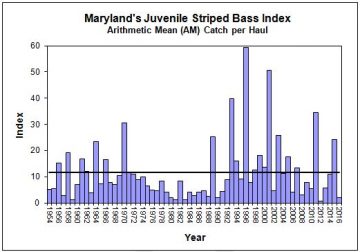 The Maryland Department of Natural Resources announced yesterday that the annual Juvenile Striped Bass Survey indicates that the 2016 striper spawn in the Chesapeake was well below average. However, it also found one-year-old striped bass from last year’s very successful year-class in abundance. Striped bass spawning success is strongly affected by environmental conditions such as rainfall and varies greatly from year-to-year, with occasional large year-classes interspersed with average or below-average year-classes. “While this year’s striped bass index is disappointing, it is not a concern unless we observe poor spawning in multiple, consecutive years,” said Fishing and Boating Services Director David Blazer. Read the rest here 15:03
The Maryland Department of Natural Resources announced yesterday that the annual Juvenile Striped Bass Survey indicates that the 2016 striper spawn in the Chesapeake was well below average. However, it also found one-year-old striped bass from last year’s very successful year-class in abundance. Striped bass spawning success is strongly affected by environmental conditions such as rainfall and varies greatly from year-to-year, with occasional large year-classes interspersed with average or below-average year-classes. “While this year’s striped bass index is disappointing, it is not a concern unless we observe poor spawning in multiple, consecutive years,” said Fishing and Boating Services Director David Blazer. Read the rest here 15:03
A Good News Report: Blue crab numbers rebounding
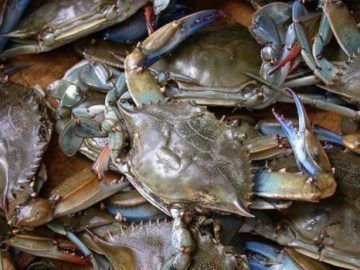 Blue crab population numbers have grown for the second straight year, especially for female crabs, but their numbers are still below target levels, a Chesapeake Bay Program report released Thursday said. The report also found that crabs were not being overfished, with about 50 million pounds taken last year over 2014’s 35.2 million pounds — the lowest harvest in 25 years. It urged regulators to stay the course and maintain crab management regulations in order to maintain the progress. Female crabs rebounded from a depleted 68 million in 2014 to 194 million at the beginning of the 2016 crabbing season, and juvenile crabs, those that will grow to harvestable size by the fall and grow into large crabs by next season, were also holding steady. Read the rest here 07:59
Blue crab population numbers have grown for the second straight year, especially for female crabs, but their numbers are still below target levels, a Chesapeake Bay Program report released Thursday said. The report also found that crabs were not being overfished, with about 50 million pounds taken last year over 2014’s 35.2 million pounds — the lowest harvest in 25 years. It urged regulators to stay the course and maintain crab management regulations in order to maintain the progress. Female crabs rebounded from a depleted 68 million in 2014 to 194 million at the beginning of the 2016 crabbing season, and juvenile crabs, those that will grow to harvestable size by the fall and grow into large crabs by next season, were also holding steady. Read the rest here 07:59
Two Maryland fishermen banned from fishing for striped bass forever
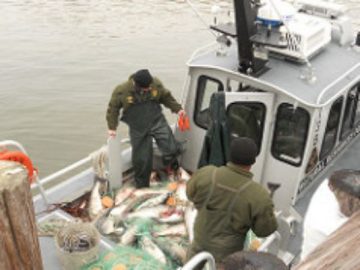 The Maryland Department of Natural Resources said that Michael D. Hayden Jr. and William J. Lednum, both of Tilghman Island, have received lifetime revocations of their striped bass privileges and have been suspended from all commercial fishing activity for the next year, followed by a four-year probationary period in all other fisheries. Their striped bass allocations are being returned to the commercial fishery allotment. In simpler terms, the two men were convicted of poaching and selling nearly $500,000 of striped bass over four years and have received lifetime bans from taking part in that fishery. Hayden and Lednum remain responsible for $498,000 in court-ordered restitution to the state of Maryland. Read the rest here 13:23:08
The Maryland Department of Natural Resources said that Michael D. Hayden Jr. and William J. Lednum, both of Tilghman Island, have received lifetime revocations of their striped bass privileges and have been suspended from all commercial fishing activity for the next year, followed by a four-year probationary period in all other fisheries. Their striped bass allocations are being returned to the commercial fishery allotment. In simpler terms, the two men were convicted of poaching and selling nearly $500,000 of striped bass over four years and have received lifetime bans from taking part in that fishery. Hayden and Lednum remain responsible for $498,000 in court-ordered restitution to the state of Maryland. Read the rest here 13:23:08
Smithsonian expert urges caution, patience on blue crab recovery
 The results are in, 2016 is going to be a good year for blue crabs in the Chesapeake Bay. An iconic figure embedded in the culture and cuisine of the Chesapeake Bay area, the blue crab (Callinectes sapidus) sustains the most profitable fishery in Maryland and supports thousands of fishermen and seafood businesses in Maryland and Virginia. Based on the annual winter survey conducted by the Maryland Department of Natural Resources and the Virginia Institute of Marine Science, there are nearly 35 percent more blue crabs in the Chesapeake Bay this season than there were in 2015. That’s good news, especially on the heels of a 38 percent increase the previous year. But scientists say there is a cautionary tale in this rapid rise. (but, of course!) Read the rest here 16:29
The results are in, 2016 is going to be a good year for blue crabs in the Chesapeake Bay. An iconic figure embedded in the culture and cuisine of the Chesapeake Bay area, the blue crab (Callinectes sapidus) sustains the most profitable fishery in Maryland and supports thousands of fishermen and seafood businesses in Maryland and Virginia. Based on the annual winter survey conducted by the Maryland Department of Natural Resources and the Virginia Institute of Marine Science, there are nearly 35 percent more blue crabs in the Chesapeake Bay this season than there were in 2015. That’s good news, especially on the heels of a 38 percent increase the previous year. But scientists say there is a cautionary tale in this rapid rise. (but, of course!) Read the rest here 16:29
Maryland scientists to conduct Chesapeake Bay oyster harvest study
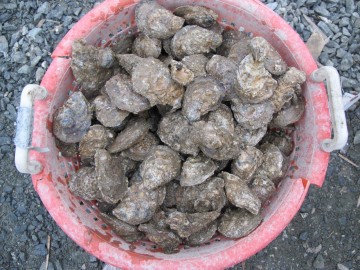 Scientists say they have only a vague idea of how many oysters cover the reefs in the Chesapeake Bay, and can’t say how many can be harvested safely each year without threatening the future of an already decimated population.In the waning hours of its 2016 session, the Maryland General Assembly this week authorized a study that advocates say will not only provide a more precise count of the bivalves, but assess how quickly they are reproducing, how fast they are growing and how they are faring against disease. The oyster study stoked controversy in an hours-long hearing earlier this month. Many watermen said it would lead inevitably to restrictions on their harvests, and the state Department of Natural Resources initially opposed it because the legislation left the DNR out of the research. But in a compromise, lawmakers gave the department responsibility for the study, to be conducted by researchers at the University of Maryland Center for Environmental Science. A final report is due in December 2018. Read the rest here 19:12
Scientists say they have only a vague idea of how many oysters cover the reefs in the Chesapeake Bay, and can’t say how many can be harvested safely each year without threatening the future of an already decimated population.In the waning hours of its 2016 session, the Maryland General Assembly this week authorized a study that advocates say will not only provide a more precise count of the bivalves, but assess how quickly they are reproducing, how fast they are growing and how they are faring against disease. The oyster study stoked controversy in an hours-long hearing earlier this month. Many watermen said it would lead inevitably to restrictions on their harvests, and the state Department of Natural Resources initially opposed it because the legislation left the DNR out of the research. But in a compromise, lawmakers gave the department responsibility for the study, to be conducted by researchers at the University of Maryland Center for Environmental Science. A final report is due in December 2018. Read the rest here 19:12

































